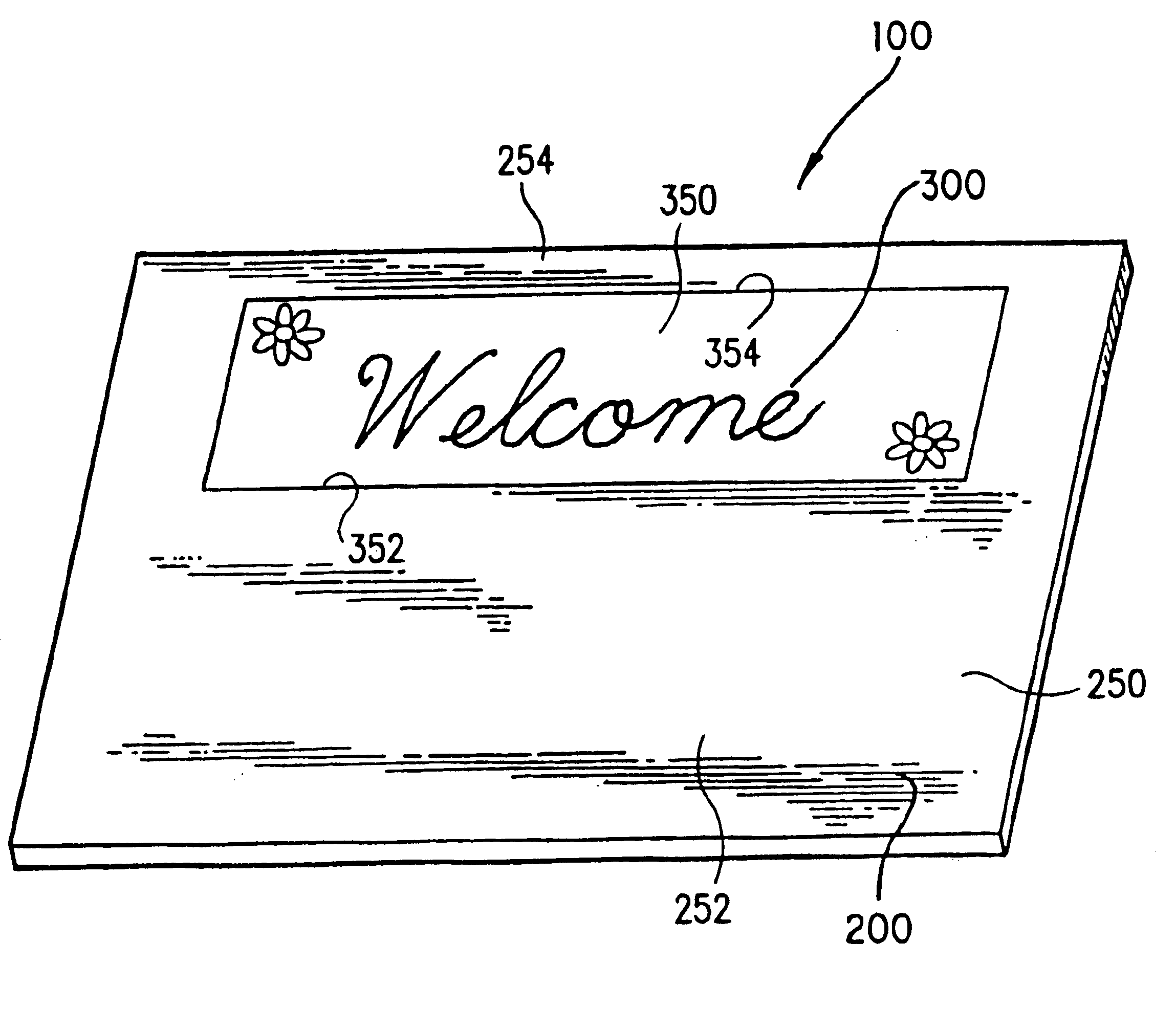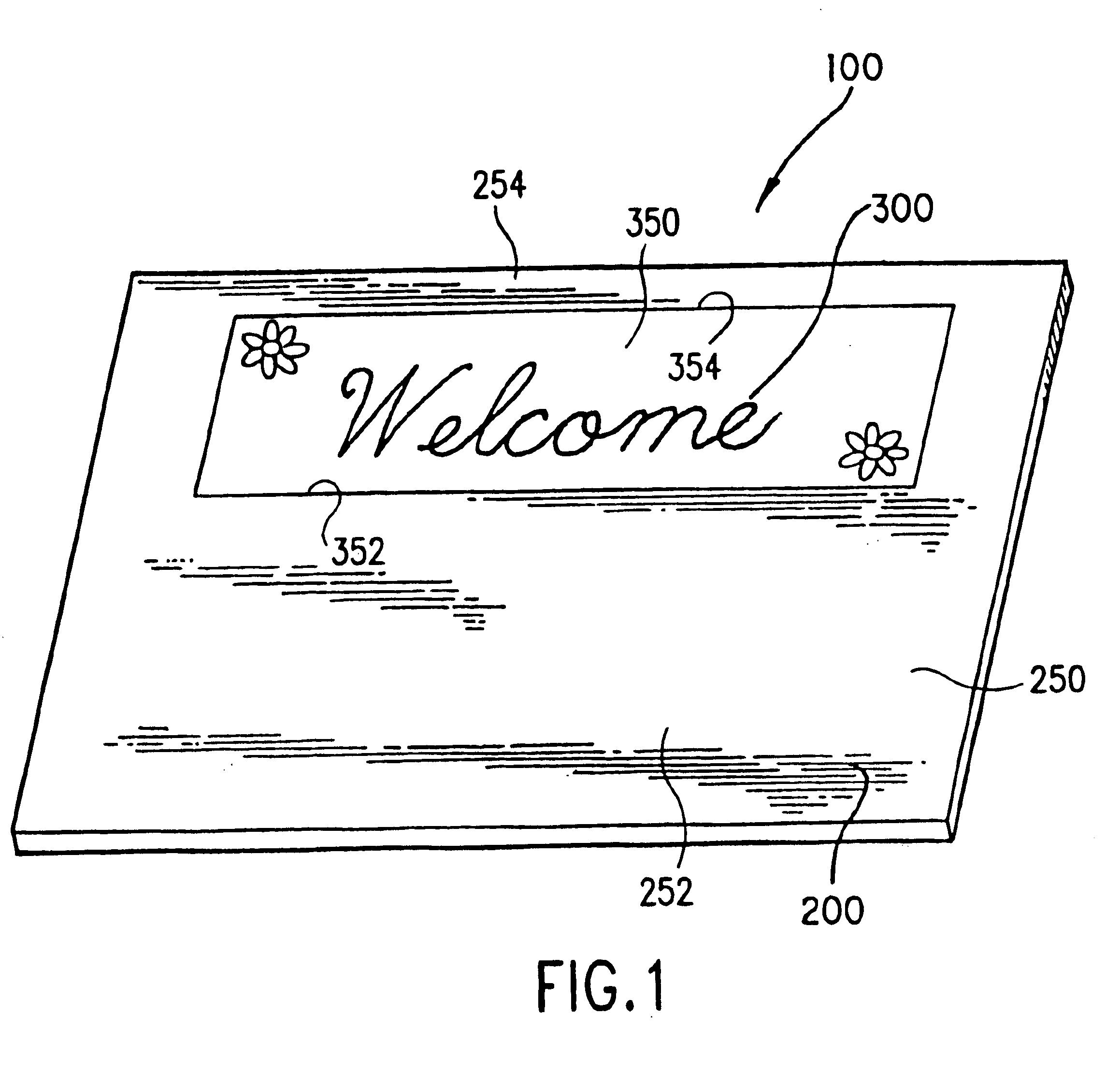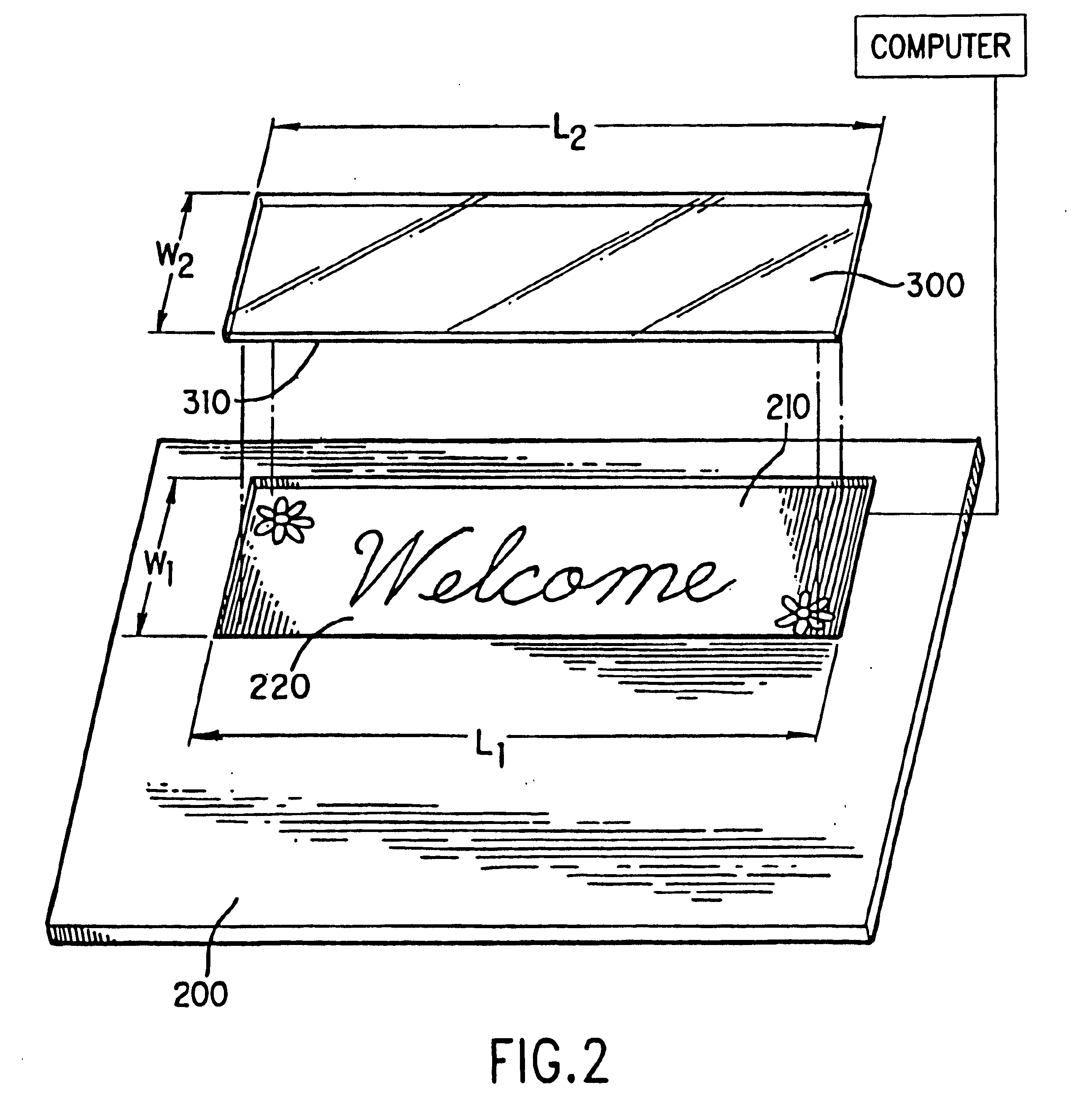One problem with floor mats in general is how to keep the floor mat sufficiently clean such that it may perform its function of cleaning the person's shoes when, by its very nature, it is purposefully dirtied when performing its function.
Whereas these single structure floor mats may be kept clean by, for example, washing the floor mat, it may be required that the entire floor mat be removed from its location for washing and thus, the floor mat is not available where desired while the entire mat is being cleaned.
Alternatively, even if the mat can be cleaned in-place, which may not be a possibility if it is located in, for example, a carpeted area, it may be inconvenient to clean the mat in-place.
However, there may be problems with comprising the floor mat of disposable sheets.
Disposing of each dirty sheet may be uneconomical since each sheet is discarded after it becomes dirty.
Additionally, after some finite number of sheets are disposed of, no sheets will remain and thus no effective cleaning surface is available.
However, again, these sheets are not cleanable and therefore are not reusable.
Whereas the '897 patent discloses a pad with a water-washable
adhesive upper surface, the pad is not known for use in domestic or office-type applications.
Thus, tacky floor mats are not known for use in areas that are adjacent to entrances that lead from the outdoor environment for cleaning the soles of a person's shoes prior to entry into the interior of a building, such as for example in an entry foyer or on an outdoor
porch.
Tacky floor mats are not known for use in domestic or office-type applications, e.g., home or business office use, because of several known deficiencies.
One of these deficiencies is that their tacky surface will not be as effective if it becomes wet.
Therefore, if the tacky surface floor mat was utilized in an outdoor environment, such as the outdoor
porch mentioned above, or in an indoor environment that is adjacent to or near an outdoor entrance, such as an entry foyer of a home or business, for cleaning a person's shoes prior to further entering the home or business, the mat is likely to become wet and therefore not effective.
Additionally, if the tacky surface becomes wet it may become slippery and thus cause a
hazard for the person who steps on it.
Nevertheless, even at this optimal threshold, the tacky surface has the deficiency described above, wherein the tacky surface may become slippery when wet.
Efforts to address this problem by tinkering with the
chemistry of the adhesives used in the tacky surface have been unavailing.
Beyond the optimal threshold of tackiness as described above (that is, if the tacky surface is made tackier), a trip
hazard is presented when the surface is dry.
On the other hand, below the threshold (that is, if the tacky surface is made less tacky), a slip
hazard is presented when the tacky surface is wet.
Additional deficiencies with using known tacky floor mats for home or office-type applications as discussed above is their likelihood of becoming trip hazards and their lack of aesthetic appeal.
This may be satisfactory for retaining the mat in-place in clean room-type of applications, however, if it was attempted to use the '897 pad on a carpeted floor, the pad would not properly adhere to the carpet and thus a trip hazard would be present.
This could result in significant liability issues.
The '897 pad does not have sufficient
mass for it to remain in-place without utilizing an
adhesive.
Regarding aesthetics, because tacky floor mats are known only for their functional characteristics, and thus for use only in “clean room”-type applications, they are not aesthetically pleasing.
Therefore, for at least the above reasons, tacky floor mats are not known for use in home or office-type applications.
Additional drawbacks with known floor mats exist that are directed to issues of customization for a particular purchaser and a lack of additional cleaning properties.
Whereas floor mats are known that may include a greeting on them, it is not currently known to allow for a particular purchaser to customize the displayed graphic so that the message is tailored to convey a particular message desired by the purchaser.
Currently, it is not known to provide a floor mat where an individual can customize the floor mat to display a particular message that they want to convey and in certain circumstances even change the floor mat's message they want to convey.
An additional problem with known floor mats, as mentioned above, is that they are limited in their ability to clean the soles of a person's shoes.
Whereas known floor mats may be capable of removing
dirt particles from the shoe's soles, they are not able to disinfect the soles nor provide a scent to the soles to assist in masking any unpleasant odors that may be associated with the shoes.
An additional drawback with known floor mats, even if they are cleanable, is that they do not assist a user in determining when the floor mat may require cleaning.
Generally, the owner or custodian of the floor mat does not continuously or regularly monitor the condition of the floor mat with respect to cleanliness.
Therefore, the floor mat could require cleaning, and because the owner is not consciously monitoring the condition of the floor mat, there could be a significant period of time before the owner realizes that the floor mat requires cleaning.
 Login to View More
Login to View More 


